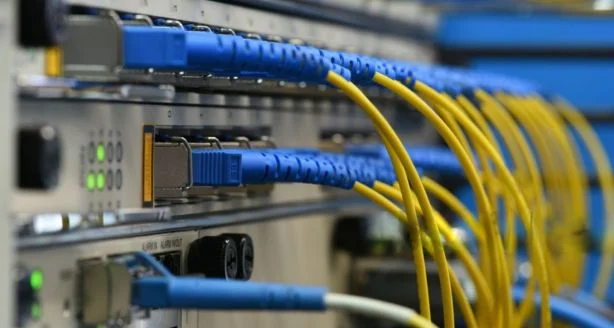Commercial Network Switches

A commercial network switch is a hardware device that connects multiple devices, such as computers, printers, servers, and other networking equipment, within a business network. Unlike consumer-grade switches, which are designed for home use, commercial switches are built for reliability, scalability, and advanced network management.
These switches operate at the data link layer (Layer 2) and sometimes the network layer (Layer 3) of the OSI model, directing network traffic efficiently to avoid congestion and improve performance.
Key Features of Commercial Network Switches
1. Port Density and Speed
- Commercial switches come with different port counts, typically ranging from 8 to 48 ports.
- Gigabit Ethernet (1Gbps) is common, but 10Gbps, 40Gbps, and even 100Gbps options are available for high-performance networks.
2. Power over Ethernet (PoE) Support
- PoE switches provide power and data over the same Ethernet cable, reducing the need for separate power sources.
- Useful for powering devices like IP cameras, VoIP phones, and wireless access points.
3. VLAN Support
- Virtual Local Area Networks (VLANs) allow businesses to segment their network for better security and performance.
- VLANs improve traffic management and reduce congestion.
4. Quality of Service (QoS)
- QoS prioritizes network traffic to ensure critical applications (such as VoIP and video conferencing) receive sufficient bandwidth.
- Essential for businesses that rely on real-time communication.
5. Redundancy and Failover
- High-end commercial switches support redundancy features like Spanning Tree Protocol (STP) and Link Aggregation (LACP) to prevent network downtime.

Benefits of Using Commercial Network Switches
Investing in commercial-grade network switches offers several advantages:
- Improved Network Performance – Advanced switching technologies optimize data transfer and reduce network congestion.
- Scalability – Easily expand your network as your business grows.
- Enhanced Security – Protect sensitive business data with advanced security protocols.
- Better Traffic Management – VLANs, QoS, and bandwidth management ensure efficient use of network resources.
- Reliability and Uptime – Redundancy features help minimize downtime and network disruptions.
Cost Savings in the Long Run – While commercial switches may have a higher upfront cost, their durability and advanced features lead to lower operational costs.
How to Choose the Right Commercial Network Switch
Assess Business Needs
Identify the number of devices that need to be connected. Determine bandwidth requirements based on your applications (e.g., video streaming, VoIP).
Consider Future Growth
Choose a switch that can accommodate future expansion, such as stackable models.
Evaluate Security Requirements
If handling sensitive data, opt for a managed switch with strong security features.
Check Power Requirements
If deploying VoIP phones or security cameras, a PoE switch is a practical choice.
